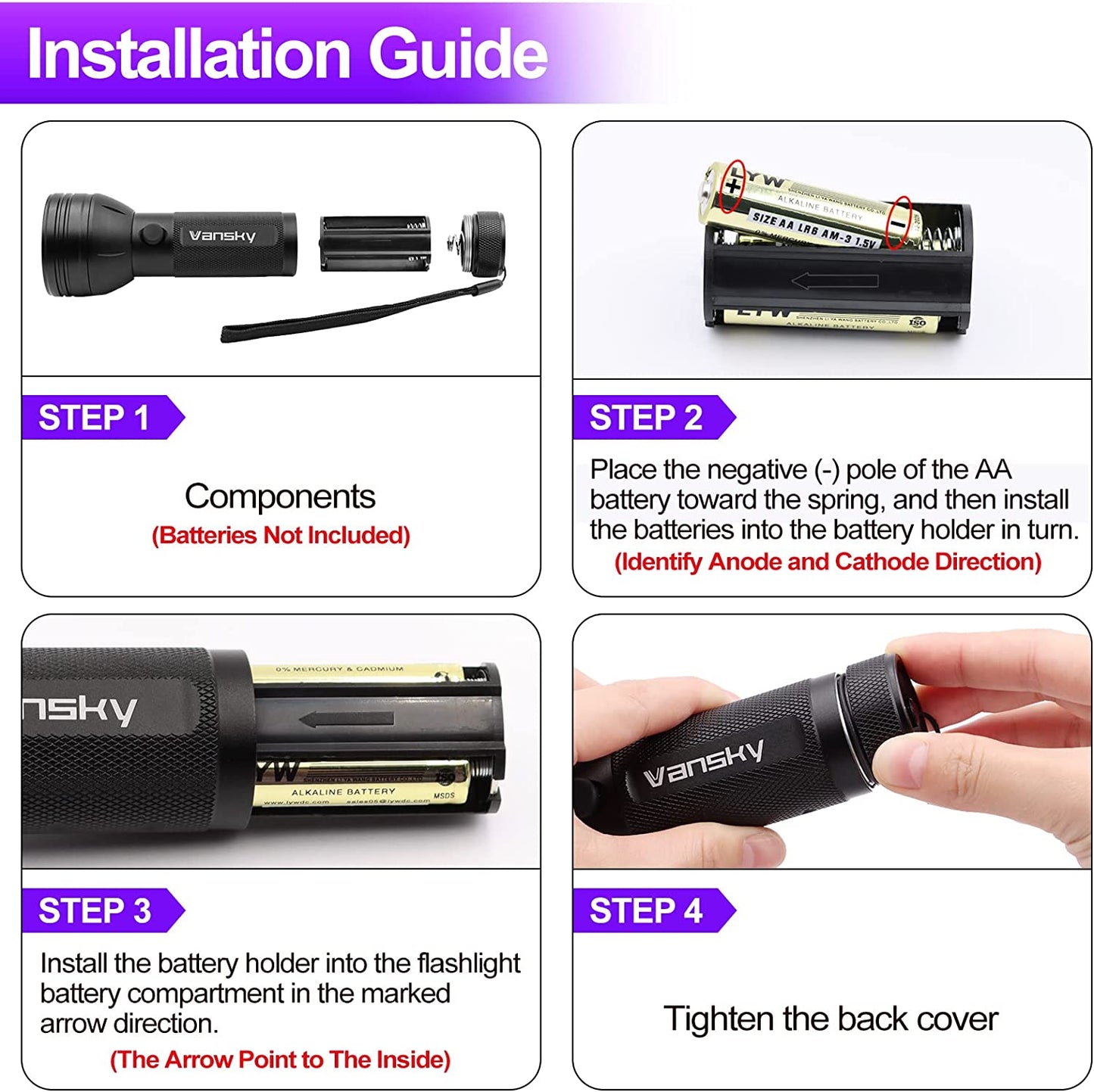1
/
of
4
食品安全市场
紫外线手电筒
紫外线手电筒
正常价格
29.00 加元
Regular price
$63.00 CAD
Sale price
$29.00 CAD
单位价格
/
每
结账时计算运费。
无法加载皮卡可用性
What is this?
This ultraviolet flashlight is used in training to reveal special powders and lotions that are not easily visible under normal lighting conditions. Using this light with the lotion helps people practice good hand washing and shows what parts of their hands and arms they have missed. Used with the power it can illustrate how easily cross contamination can happen between food and equipment.
The Aluminum 41 UV LED 2 mode flashlight is bright, tough, and remarkably handy. Its piercing light comes from 41 UV LEDs each with a life of 100,000 hours so you'll never replace a bulb again.
This flashlight features 2-way lighting for 21 LED short and 41 LED long distances. Plus, with a durable design and a battery life of up to 25 hours, it's O-ring sealed and water resistant.
Who should purchase this?
Teachers and trainers of food safety should purchase the ultraviolet flashlight to use it in their food safety training. This can really help teach people about invisible risks and give them practice behaviours that will reduce the risk of foodborne illness.
This ultraviolet flashlight is used in training to reveal special powders and lotions that are not easily visible under normal lighting conditions. Using this light with the lotion helps people practice good hand washing and shows what parts of their hands and arms they have missed. Used with the power it can illustrate how easily cross contamination can happen between food and equipment.
The Aluminum 41 UV LED 2 mode flashlight is bright, tough, and remarkably handy. Its piercing light comes from 41 UV LEDs each with a life of 100,000 hours so you'll never replace a bulb again.
This flashlight features 2-way lighting for 21 LED short and 41 LED long distances. Plus, with a durable design and a battery life of up to 25 hours, it's O-ring sealed and water resistant.
Who should purchase this?
Teachers and trainers of food safety should purchase the ultraviolet flashlight to use it in their food safety training. This can really help teach people about invisible risks and give them practice behaviours that will reduce the risk of foodborne illness.
分享








